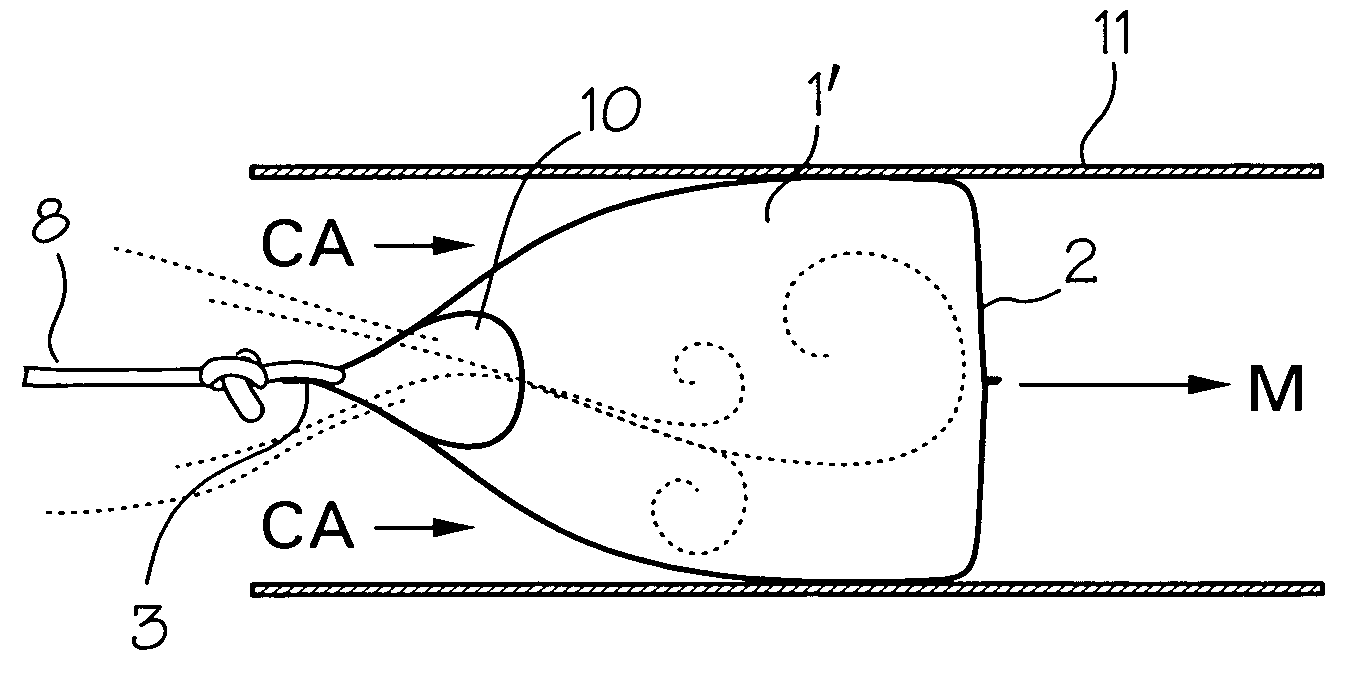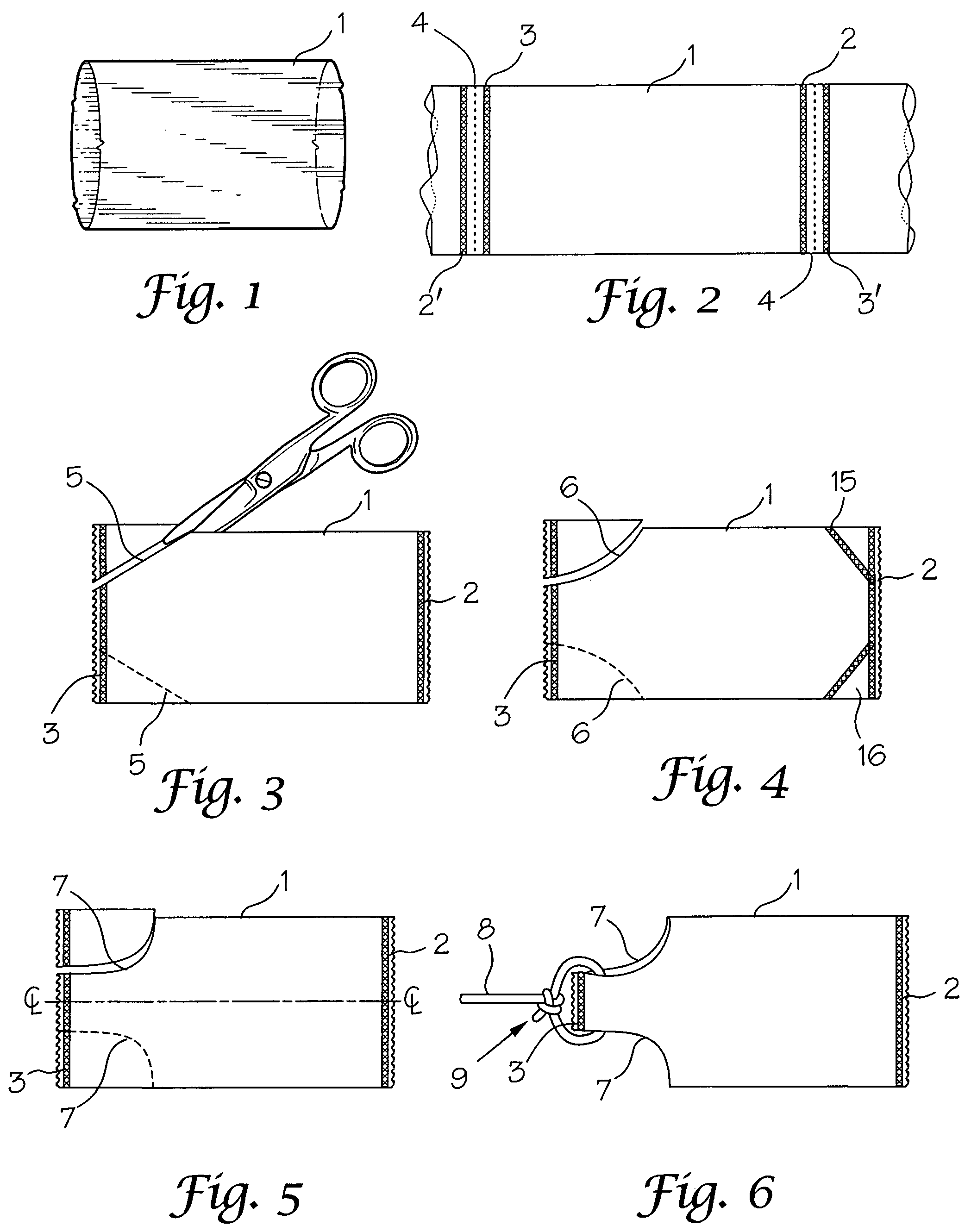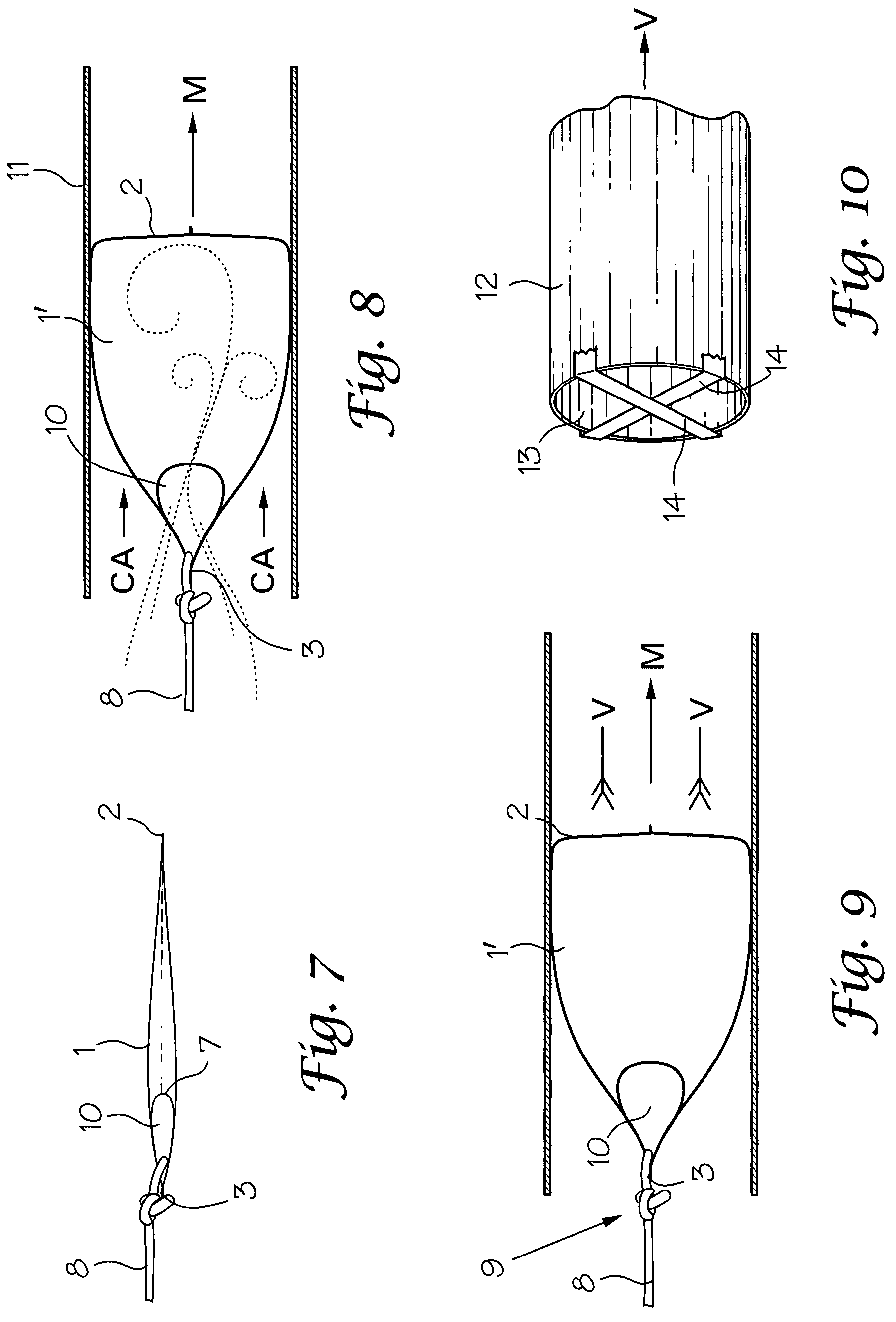Line runner for conduit
a line runner and conduit technology, applied in the direction of cables, slitting machines, transportation and packaging, etc., can solve the problems of limiting the flexibility of the conduit, the relative complexity of the two pieces, and the cost of the runner,
- Summary
- Abstract
- Description
- Claims
- Application Information
AI Technical Summary
Benefits of technology
Problems solved by technology
Method used
Image
Examples
Embodiment Construction
[0022]Turning first to FIG. 1, tubular sleeve 1 is shown. Preferably this is a seamless tube of a thermoplastic material such as linear low-density polyethylene which is a very tough and strong form of polyethylene. Other heat sealable polymeric materials may also be used such as polypropylene, polyesters and nylon. While the seamless tube is preferred as the starting point for making the line runner of the present invention, superimposed sheets of heat sealable material may be longitudinally side sealed to form a tube also. Gussets may also be formed by inwardly creasing of both sides of the tube before sealing in the lay flat condition. FIG. 2 shows the tube or sleeve of FIG. 1 in lay flat condition where the sleeve 1 is heat-sealed at spaced apart intervals with transverse heat seals 2 and 3 which form the respective front and rear seals of the bag and along cut lines or score lines 4. The bags are preferably severed one from the other by a heat sealing process that in one seal a...
PUM
 Login to View More
Login to View More Abstract
Description
Claims
Application Information
 Login to View More
Login to View More - R&D
- Intellectual Property
- Life Sciences
- Materials
- Tech Scout
- Unparalleled Data Quality
- Higher Quality Content
- 60% Fewer Hallucinations
Browse by: Latest US Patents, China's latest patents, Technical Efficacy Thesaurus, Application Domain, Technology Topic, Popular Technical Reports.
© 2025 PatSnap. All rights reserved.Legal|Privacy policy|Modern Slavery Act Transparency Statement|Sitemap|About US| Contact US: help@patsnap.com



